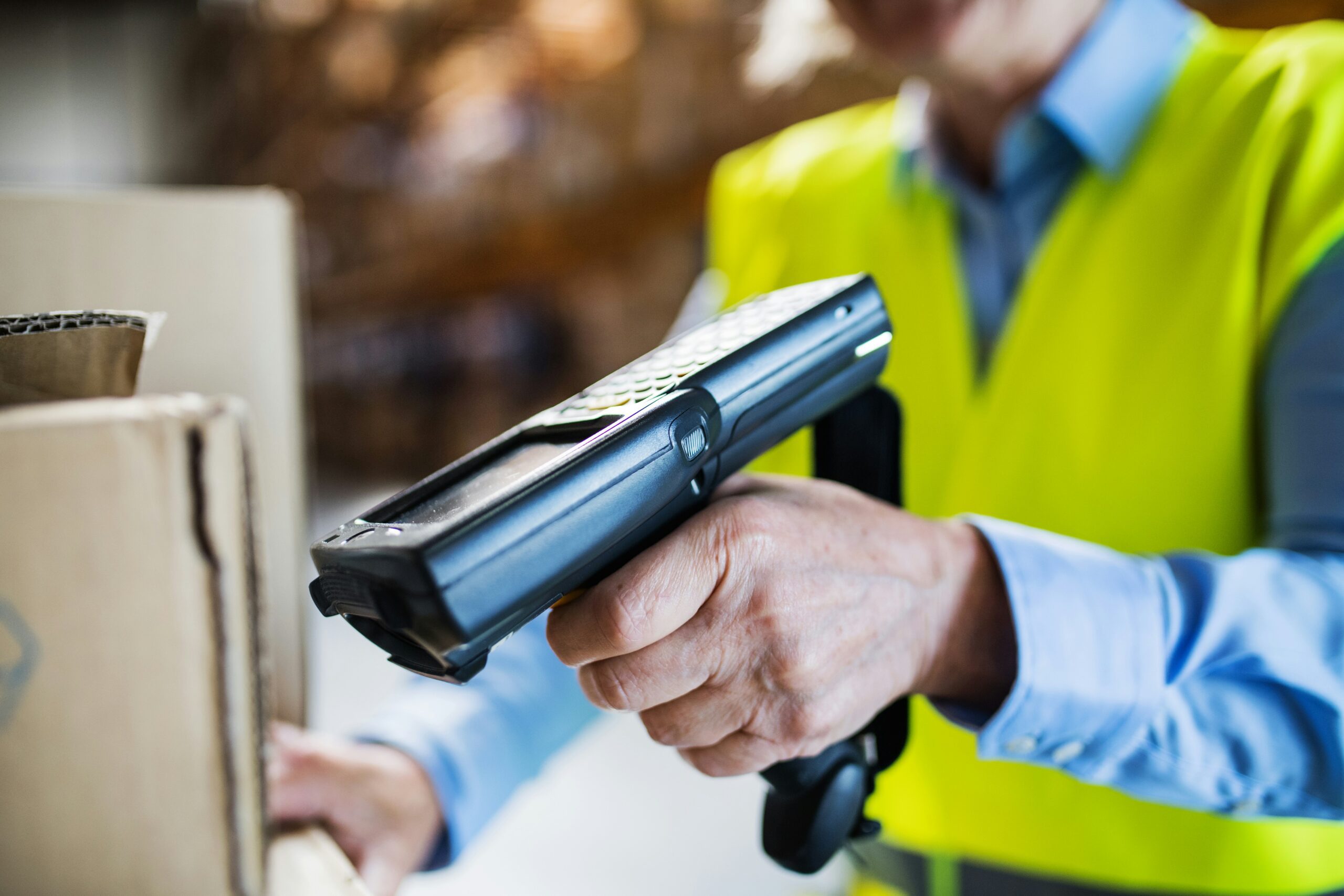Managing your inventory effectively is crucial, especially for those dealing with small-scale equipment or important events. One way that businesses simplify operations is by using serial numbers.
In this article, we will explore what serial numbers are, the different types they come in, and why they are indispensable to your operations. We’ll dive deep into how these identifiers can simplify inventory management, enhance security, and ensure efficient service delivery for your rental business.
What is a Serial Number?
A serial number is a specific code that’s given to each item sold or rented. This code is a mix of letters and numbers that is different for every single item, even if those items are the same model. For example, if you rent out twenty identical tents, each tent will have its own unique serial number.
Serial numbers can range from as few as six characters to more than twenty, depending on the manufacturer’s needs and the complexity of the inventory system. The combination of numbers and letters increases the total number of unique codes that can be generated, making it possible to assign unique serial numbers to a vast number of items.
These unique codes allow you to track each item individually, which means you can store information for each item within your inventory tracking system. You can use serial numbers to check where an item came from, how long it’s been in your inventory, and even when it’s time to replace it.
What is The Difference Between Serial Numbers and Model Numbers/Universal Product Codes?
While serial numbers are unique to each item, other identifiers like model numbers and Universal Product Codes (UPCs) serve different purposes.
- Model Numbers are common to items of the same type. For instance, all chairs of the same model that you rent out will share the same model number, helping you quickly identify and categorize them based on their design and features.
- Universal Product Codes (UPCs) are barcode symbols that are widely used in retail to manage sales and inventory. Unlike serial numbers, a UPC is the same for all items of a specific product type, making them less useful for tracking individual items.

Types of Serial Numbers
Serial numbers come in various formats, each serving specific purposes in inventory and asset management. Here are the main types you’ll encounter:
Sequential Serial Numbers
Sequential serial numbers are assigned in the order the items are made or entered into the inventory. This makes tracking the production and distribution process straightforward. For instance, if you start with serial number 001 for the first tent and move to 002 for the second, you can easily see the order of acquisition.
Sequential serial numbers often include date codes, which can tell you when an item was manufactured. This helps manage warranty periods or determine the age of an item. They may also include batch codes, a specific type of serial number used to group items produced in the same batch or manufacturing run. This code enables you to track and manage products made simultaneously, simplifying the handling of recalls or quality checks, as all items in a batch likely share the same production conditions.
Example: SN: 20230715-001-123
- 20230715: This indicates that the item was manufactured on July 15, 2023.
- 001: This is the batch code, which means that this item was part of the first batch of products made on that day.
- 123: This is the sequential serial number, which represents the unique identifier for this specific item. The number indicates that was the 123rd item produced in that batch.
Explanation
In our discussion, we used a straightforward example of a serial number SN: 20230715-001-123to illustrate how date codes, batch codes, and unique identifiers can be integrated. This format clearly segments the date of manufacture, batch number, and individual item number, making it easy to understand at a glance. This demonstrates how various pieces of information are structured within a serial number.
However, in real-world applications, serial numbers often adopt more complex and less transparent formats to meet industry standards and enhance security. For example, you might use a serial number like A3B-0723X-00987. Here, “A3B” could represent the product type or location, “0723X” is the manufacturing date and batch, and “00987” shows the item’s sequence in production. This complexity helps businesses keep sensitive manufacturing details confidential and makes the serial numbers harder to replicate or tamper with, providing an additional layer of security and control.
Alphanumeric Serial Numbers
Alphanumeric serial numbers use a combination of letters and numbers, allowing for a higher volume of unique combinations. They can encode additional details, like the product line or specific features, within the serial number itself. The inclusion of letters helps break up patterns, making these serial numbers easier to read and less prone to errors during manual entry.
Alphanumeric serial numbers are highly useful for rental businesses that handle a wide variety of items, from furniture to audio equipment. These serial numbers can incorporate specific details that streamline operations and improve inventory management. They allow for detailed classifications within your inventory, which can help staff quickly identify not just the type of item (such as tables, chairs, or lights) but also specific styles or sizes.
Example: SN: TBL-101A234
- TBL: This prefix represents the category of the item, here indicating “Table.”
- 101: This might represent a specific type or style of table, such as a round banquet table.
- A234: This set of characters is the unique identifier for that particular table.
Explanation
Prefixes that categorize items can help staff quickly filter through inventory systems to find all items under a specific category. This reduces search times and simplifies logistical planning. Additionally, adding a unique identifier ensures that the unit’s rental history is trackable, and makes it easier to send the item to maintenance.
Random Serial Numbers
Algorithms generate these numbers to ensure each is unique and not in a predictable sequence. This type is great for security purposes because it makes the numbers difficult to duplicate or predict.
Random serial numbers help ensure that warranties are applied correctly to the right item, which prevents fraud. Their unpredictability helps prevent counterfeit products from entering the market as they cannot easily mimic these serial numbers.
Example: SN: X9F4-7T32-ZY6
Random serial numbers that incorporate both letters and numbers, such as X9F4-7T32-ZY6, are common in various industries, including rental businesses. This mix of characters enhances the security of the serial number, making it more challenging to predict or replicate.
Random serial numbers are particularly useful for items that require high levels of security, such as expensive rental equipment. The unpredictable nature of these numbers makes it nearly impossible for unauthorized individuals to forge or guess them. This is essential for preventing fraud and theft.

Benefits of Serial Numbers for Inventory Management
We already know that serial numbers and barcoding systems are used in retail, but did you know these systems are used in crucial operations for government agencies like the Department of Homeland Security? These systems serve to track important assets like firearms, vehicles, evidence, and more!
If serial number tracking can help an organization as complex as DHS, imagine what you could do with it at your rental business! These systems are especially useful for rental businesses that manage a diverse inventory of equipment and/or party supplies.
Here’s why:
- Precise Inventory Management: Serial numbers provide a unique identifier for each item, no matter how many identical products you have. This makes it easy to accurately track each item’s location, status, and availability, which is crucial for managing inventory effectively.
- Maintenance and Quality Control: You can track each item’s rental history via its serial number, making it easier to schedule regular maintenance and checks. This approach helps maintain the quality of the items and ensures prompt addressing of any wear and tear. Well-maintained items lead to higher customer satisfaction, repeat business, and a higher ROI.
- Efficient Utilization and Allocation: By analyzing the usage data linked to serial numbers, rental businesses can optimize their inventory levels and allocation strategies. This analysis reveals which items are most popular and which do not get a lot of use. This helps users make informed decisions about whether to purchase or get rid of certain items.
- Theft Prevention and Recovery: Serial numbers make it easier to register items in inventory management systems, which can be critical in case of theft. If someone steals an item, keeping its serial number on file can help you recover it and file insurance claims.
These benefits make serial numbers a foundational aspect of inventory management for rental businesses.

Serial Numbers and Barcoding Systems
When you start implementing serial numbers into your business management strategy, start by assigning every item in your inventory a unique serial number. It’s important to maintain a detailed log of these numbers in your rental management software, which should include each item’s serial number, purchase date, condition, and any other relevant details. Once you have serial numbers assigned to all of your inventory, it is time to invest in a barcode system.
What Is a Barcode System?
A barcode system, when used in conjunction with serial numbers, is a powerful tool for tracking and managing inventory. It consists of generating a unique barcode for each item’s serial number, which you can print and attach to the item. You can quickly scan these barcodes with barcode readers that capture and transmit the serial number data to a computer system.
Want to learn more about barcode systems for rental businesses? Check out our blog, “Should You Use a Barcode System For Your Rental Business?”, which goes into detail on barcodes and how they are beneficial for rental businesses that use serial numbers.
How are Serial Numbers and Barcodes Used?
Here are the various ways that you can use serial numbers and barcoding systems in conjunction with one another:
- Item Receipt and Tagging: When new equipment, like speakers or tables, arrives at the warehouse, assign each one a unique serial number. Then, generate a barcode and print it on a label. You can then attach the barcode securely to the item.
- Inventory Entry: Scan each item’s barcode label with a barcode reader. Your rental management software will automatically enter the item’s information into its database. This entry includes details such as item description, purchase date, cost, and any other relevant metadata.
- Equipment Check-Out: When you rent an item out, you scan the barcode. Then, your rental management software will record the transaction, noting the customer details, rental period, and expected return date. This process updates the item’s status in the inventory as “rented” and logs who currently has the item.
- Item Returns and Check-In: Upon return, scan the item’s barcode again. The system checks the item back into inventory, updates its condition based on a post-rental inspection, and marks it as available for future rentals. Log any damage or issues, and then schedule further action.
Implementing serial numbers and a barcode system significantly streamlines operations in a rental business by automating inventory management and tracking processes. It minimizes human error in logging transactions and speeds up customer service interactions. Additionally, it simplifies maintenance scheduling and inventory auditing, ensuring that all equipment is in top condition and readily available when needed.

Start Tracking Your Inventory Efficiently with Serial Numbers!
In summary, remember that tracking your rental items accurately is key to running a successful business. Serial numbers help you keep track of each item, ensuring everything works smoothly and your customers are happy. They make it easy to see where each item is, who has it, and when it needs upkeep.
Consider pairing serial numbers with barcode systems for even better results. This combination speeds up checking items in and out and keeps errors low, which will make your business run smoother and save your team time.
Other blogs you may find helpful:
Protect Your Rental Business from Equipment Theft and Fraud
10 Easy Ways to Use AI for Your Rental Business
The Importance of Equipment and Party Rental Contracts in 2024
Frequently Asked Questions
A serial number is a specific code assigned to each item sold or rented, composed of a combination of letters and numbers. Each serial number is unique to an individual item, even if multiple items are of the same model. For instance, if you have twenty identical tents for rent, each one will have its own distinct serial number.
A serial number can look different depending on what the manufacturer decides. It usually has six to more than twenty characters and includes both letters and numbers. This mix helps create many unique codes. For example, a serial number might be shown as “SN: 20230715-001-123.” Here, “20230715” tells you the date it was made, “001” is a code for the batch it was made with, and “123” shows it was the 123rd item made in that batch.
Yes, serial numbers are unique. Each serial number is a specific code assigned to a single item, which means that no two items should have the same serial number, even if they are the same model.
A serial number is a unique code that helps you track each item separately. It can tell you where the item was made and when, which is useful for keeping track of warranties and knowing how old the item is. It also helps you plan when the item needs maintenance or repairs to keep it in good shape.
Serial numbers can be as short as six characters or longer than twenty characters. The exact length depends on what the manufacturer needs for tracking their items.
